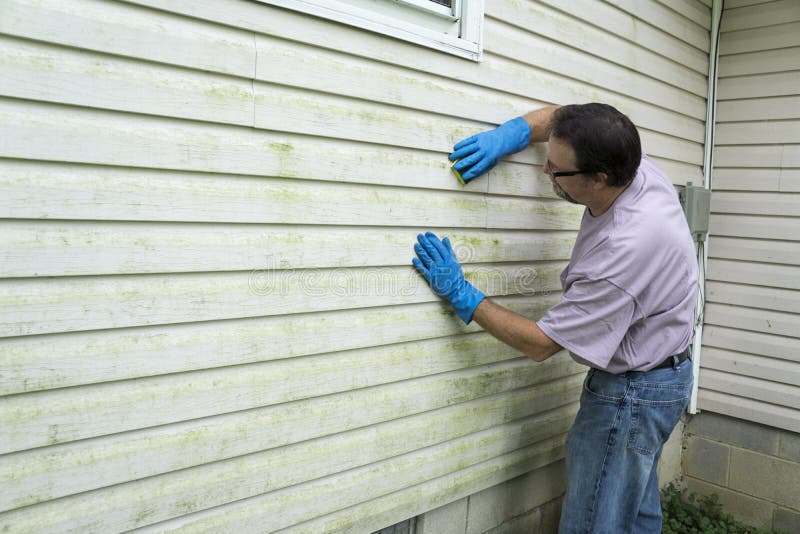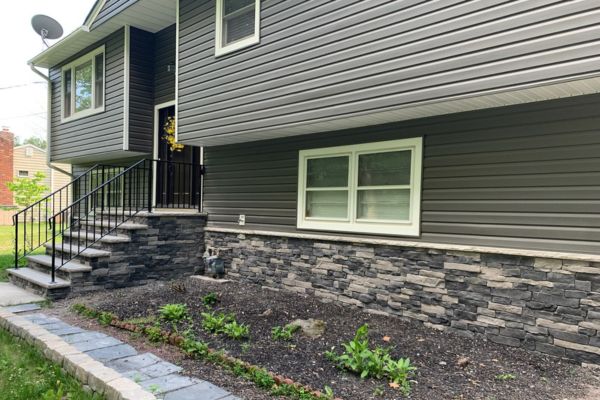Morris Siding Contractor with Years of Expertise in Home Exterior Upgrades
The Essential Guide to the Numerous Sorts Of House Siding and Their Distinct Advantages
In the realm of home enhancement, selecting the best exterior siding is a crucial choice that influences both visual charm and practical performance. With so numerous choices to think about, which house siding material truly stands out for your details task?
Timber House Siding
Wood siding, a popular option for household exteriors, uses a classic aesthetic that combines natural elegance with architectural stability. This home siding material is available in numerous styles, including clapboard, tiles, and board-and-batten, enabling house owners to personalize their façade to match their design preferences. Timber exterior siding is normally crafted from resilient species such as cedar, redwood, or want, which are known for their durability and ability to hold up against environmental stressors.
One of the primary benefits of wood siding is its superb insulation residential or commercial properties, which can add to energy effectiveness and lower heating prices. Furthermore, wood house siding is naturally degradable, making it an eco-friendly option when sourced sustainably. Regular maintenance, including painting or staining, can lengthen its lifespan and improve its appearance, enabling home owners to maintain the all-natural charm of the wood.
Nevertheless, potential downsides include sensitivity to parasites, rot, and weather damages, requiring adequate therapy and maintenance - morris siding contractor. Despite these problems, when appropriately cared for, wood home siding can provide a attractive and durable solution that enhances the character of a home while using a cozy, inviting ambience

Vinyl Home Siding
Vinyl house siding has emerged as a leading option for home owners seeking a low-maintenance outside alternative that combines longevity and affordability. This versatile material is crafted from polyvinyl chloride (PVC), making it immune to numerous weather, including wetness and UV rays. Because of this, plastic home siding does not warp, rot, or fade, making certain lasting aesthetic appeal.
Among the primary advantages of plastic siding is its extensive series of designs and colors, allowing home owners to accomplish the preferred try to find their building without the demand for constant repainting. Furthermore, plastic siding is simple to mount, which can considerably lower labor expenses throughout building or remodelling tasks.
Plastic siding also adds to power performance. Many choices function insulation support, which enhances thermal efficiency, aiding to keep comfy indoor temperature levels and possibly lowering energy costs. Additionally, its smooth surface area facilitates easy cleaning, calling for just periodic cleaning with a yard hose to eliminate dust and particles.
Fiber Concrete House Siding
Fiber cement siding has gained traction amongst homeowners and contractors alike due to its remarkable mix of durability and visual convenience. Made up of a blend of sand, cellulose, and concrete fibers, this exterior siding option is crafted to withstand severe weather, including high winds, hefty rainfall, and temperature level changes, making it a long-lasting selection for property exteriors.

Among the main advantages of fiber cement house this page siding is its resistance to basics insects, such as termites, and its non-combustible nature, offering boosted fire security. morris siding contractor. In addition, it is offered in a wide variety of styles, structures, and colors, permitting house owners to accomplish their preferred aesthetic without sacrificing performance
An additional advantage is its low maintenance demands; fiber concrete house siding commonly needs painting or discoloration every 5-10 years, which is less regular than other products. Furthermore, its durability adds to a lower total expense of possession, as it lowers the need for constant fixings or replacements.
Inevitably, fiber cement siding stands for an exceptional investment for those looking for a durable, appealing, and versatile exterior choice, integrating both type and function to enhance the home's curb appeal.
Steel House Siding
The attraction of steel home siding hinges on its robust toughness and contemporary aesthetic appeal, making it a favored selection for modern design. Available in materials such as light weight aluminum and steel, steel home siding provides a variety of surfaces and colors, enabling property owners to achieve a personalized appearance that enhances their style vision.

Power efficiency is another significant advantage, as many steel exterior siding products are developed with insulation options that help regulate indoor temperatures. This can lead to decreased energy expenses over time. In addition, steel home siding is frequently recyclable, making it an eco-friendly choice for sustainability-minded home owners.
The installment procedure for metal siding can be relatively uncomplicated, causing a quicker turnaround time for building jobs. Overall, steel home siding integrates functionality and design, making it a sensible choice for those seeking a enduring and aesthetically attractive outside surface.
Brick and Rock Exterior Siding
Brick and rock siding attracts attention as a timeless selection that improves the visual beauty of any type of home. Known for their longevity and low upkeep, these materials provide an exceptional roi while boosting the residential or commercial property's curb allure. Available in various colors, structures, and patterns, brick and rock can be tailored to fit diverse architectural styles, from conventional to modern-day.
One of the main advantages of brick and stone house siding is their energy performance. Both products possess all-natural insulating buildings that help manage interior temperature levels, potentially reducing cooling and heating prices. Furthermore, they use exceptional fire resistance compared to various other exterior siding choices, adding to boosted safety.
Another advantage is their long life. Brick and stone can last for years, commonly needing very little upkeep past occasional cleansing. Unlike timber home siding, they are unsusceptible pests and rot, making certain a resilient exterior that endures the components.
Conclusion
In summary, the selection of exterior siding dramatically influences a home's visual allure, energy effectiveness, and upkeep requirements. Each sort of home siding-- whether wood, plastic, fiber brick, cement, or steel and rock-- offers special advantages customized to numerous home owner preferences and ecological conditions. Understanding these alternatives makes it possible for informed choices that boost both the toughness and visual beauty of property exteriors. Ultimately, selecting the appropriate home siding is necessary for achieving an equilibrium in between functionality and layout in household design.
One of the primary advantages of wood house siding is its exceptional insulation homes, which can add to energy efficiency and lower home heating costs. In addition, wood home siding is biodegradable, making it an eco pleasant choice when sourced sustainably.One of the main benefits of steel exterior siding is its resistance to numerous environmental aspects.Power efficiency is another significant advantage, as lots of metal siding items are created with insulation choices that help control indoor temperature levels. Each kind of siding-- whether wood, vinyl, fiber metal, brick, or cement and rock-- supplies unique benefits tailored to different house owner choices and ecological problems.